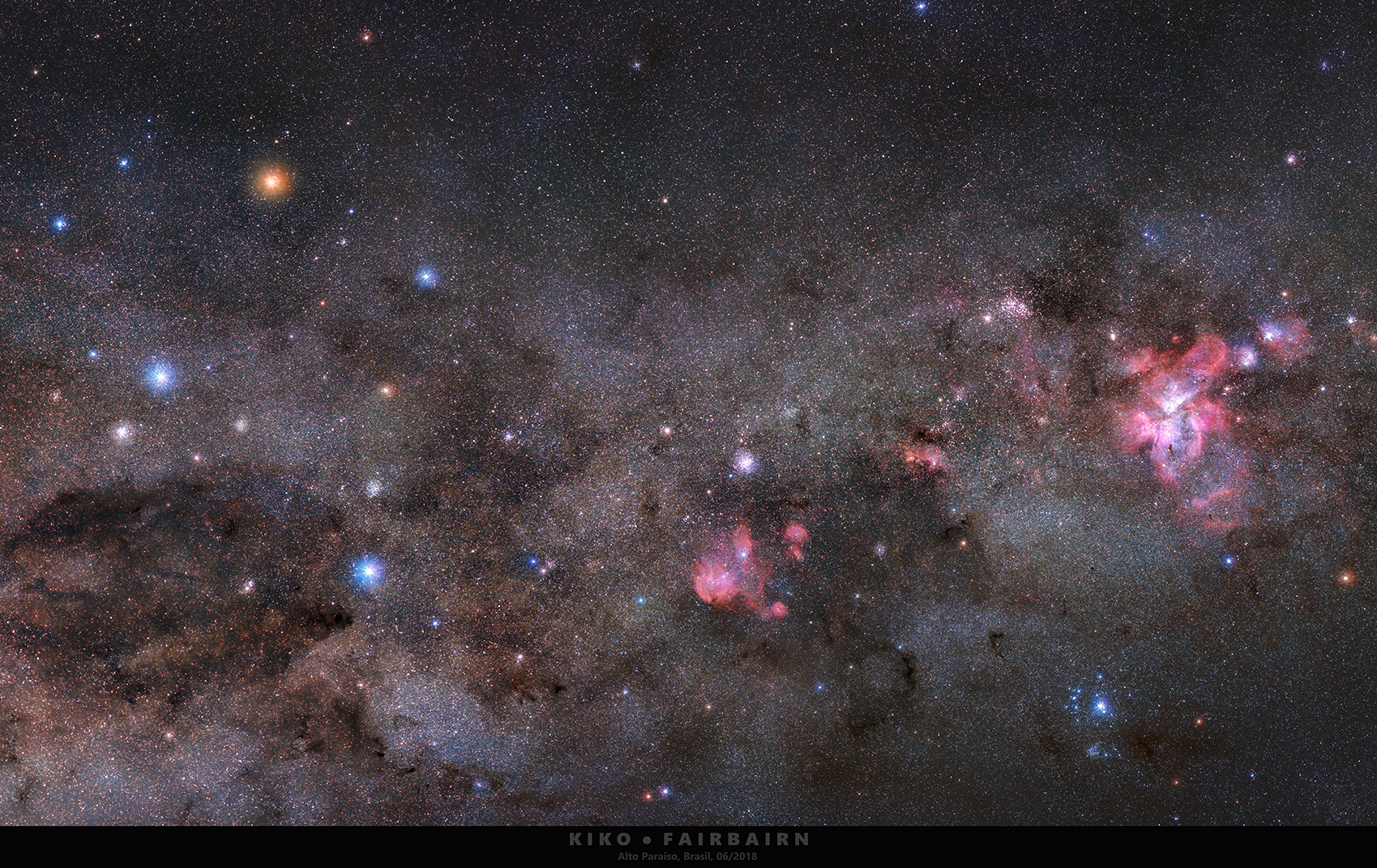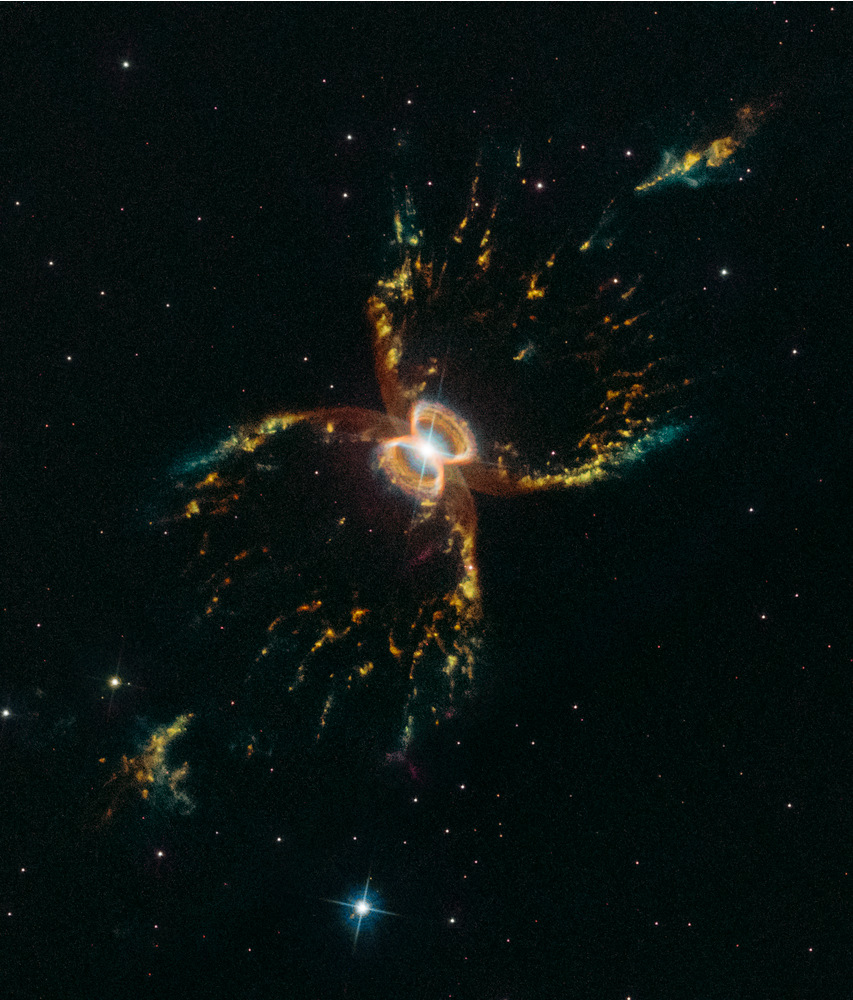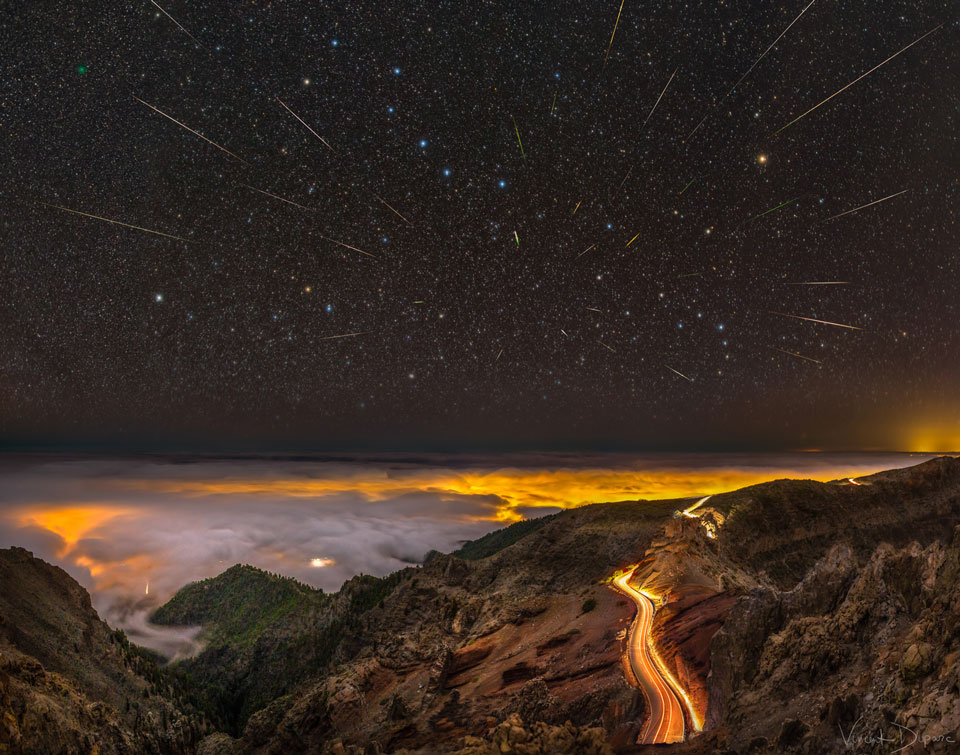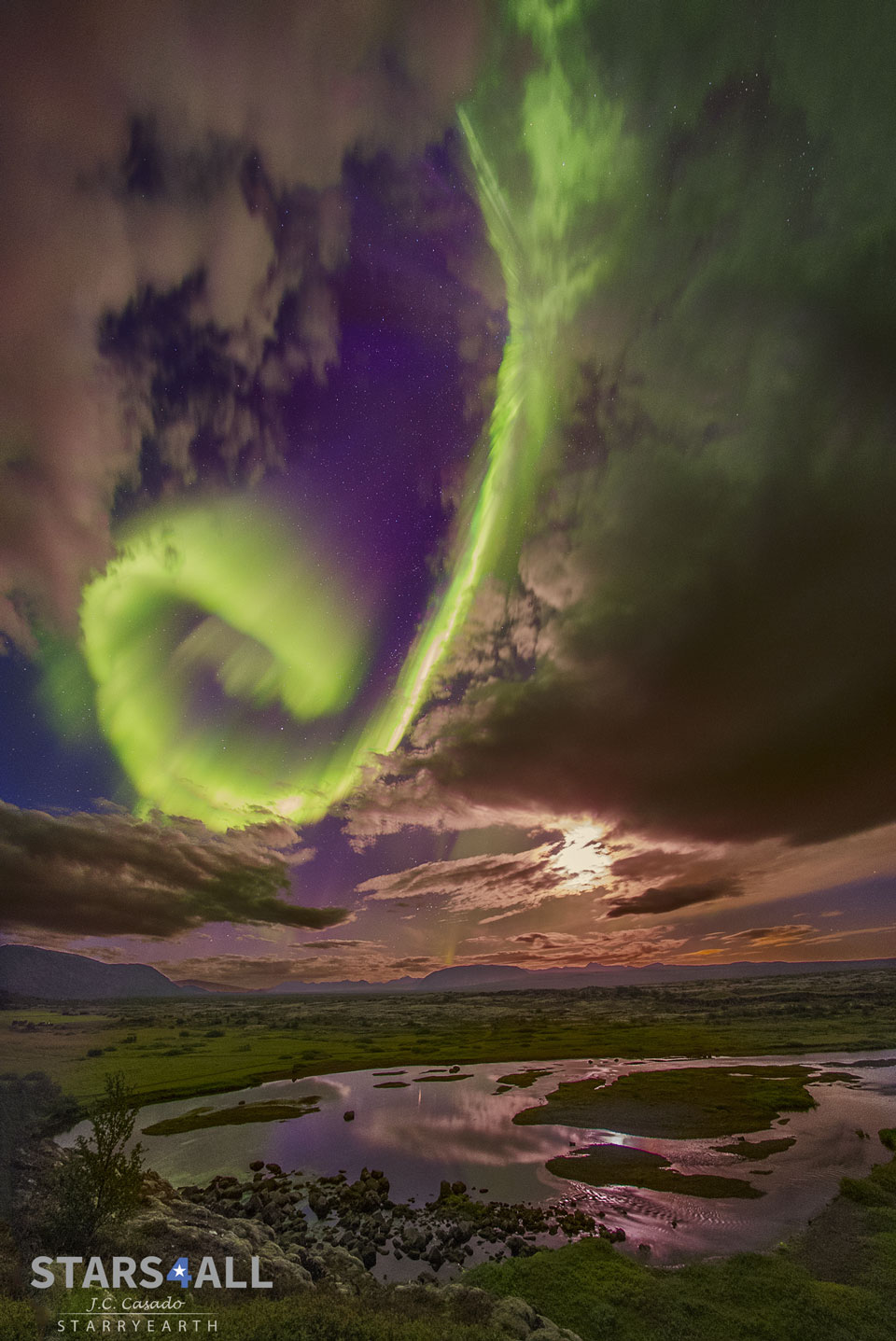Explanation: Only six years ago, the entire surface of planet Mercury was finally mapped. Detailed observations of the innermost planet's surprising crust began when the robotic have been ongoing since the robotic MESSENGER spacecraft first passed Mercury in 2008 and continued until its controlled crash landing in 2015. Previously, much of the Mercury's surface was unknown as it is too far for Earth-bound telescopes to see clearly, while the Mariner 10flybys in the 1970s observed only about half. The featured video is a compilation of thousands of images of Mercury rendered in exaggerated colors to better contrast different surface features. Visible on the rotating world are rays emanating from a northern impact that stretch across much of the planet, while about half-way through the video the light colored Caloris Basin rotates into view, a northern ancient impact feature that filled with lava. Recent analysis of MESSENGER data indicates that Mercury has a solid inner core.
Nombre total de pages vues
28/04/2019
Science & Technology - Astronomy picture of the day (video) : All of Mercury
27/04/2019
Science & Technology - Astronomy picture of the day : The Galaxy, the Jet, and the Black Hole

Explanation: Bright elliptical galaxy Messier 87 (M87) is home to the supermassive black hole captured by planet Earth's Event Horizon Telescope in the first ever image of a black hole. Giant of the Virgo galaxy cluster about 55 million light-years away, M87 is the large galaxy rendered in blue hues in this infrared image from the Spitzer Space telescope. Though M87 appears mostly featureless and cloud-like, the Spitzer image does record details of relativistic jets blasting from the galaxy's central region. Shown in the inset at top right, the jets themselves span thousands of light-years. The brighter jet seen on the right is approaching and close to our line of sight. Opposite, the shock created by the otherwise unseen receding jet lights up a fainter arc of material. Inset at bottom right, the historic black hole image is shown in context, at the center of giant galaxy and relativistic jets. Completely unresolved in the Spitzer image, the supermassive black hole surrounded by infalling material is the source of the enormous energy driving the relativistic jets from the center of active galaxy M87.
26/04/2019
Science & Technology - Astronomy picture of the day : Southern Cross to Eta Carinae

Explanation: Tracking along the southern Milky Way this beautiful celestial mosaic was recorded under dark Brazilian skies. Spanning some 20 degrees it actually starts with the dark expanse of the Coalsack nebula at the lower left, tucked under an arm of the Southern Cross. That compact constellation is topped by bright yellowish Gamma Crucis, a cool giant star a mere 88 light-years distant. A line from Gamma Crucis through the blue star at the bottom of the cross, Alpha Crucis, points toward the South Celestial Pole. Follow the Milky Way to the right and your gaze will sweep across IC 2948, popularly known as the Running Chicken nebula, before it reaches Eta Carinae and the Carina Nebula near the right edge of the frame. About 200 light-years across, the Carina Nebula is a star forming region much larger than the more northerly stellar nursery the Orion Nebula. The Carina Nebula lies around 7,500 light-years from Earth along the plane of the Milky Way.
25/04/2019
Science & Technology - Astronomy picture of the day : The Shape of the Southern Crab

Image Credit: NASA, ESA, STScI
Explanation: The symmetric, multi-legged appearance of the Southern Crab Nebula is certainly distinctive. About 7,000 light-years distant toward the southern sky constellation Centaurus, its glowing nested hourglass shapes are produced by the remarkable symbiotic binary star system at its center. The nebula's dramatic stellar duo consists of a hot white dwarf star and cool, pulsating red giant star shedding outer layers that fall onto the smaller, much hotter companion. Embedded in a disk of material, outbursts from the white dwarf cause an outflow of gas driven away both above and below the disk resulting in the bipolar hourglass shapes. The bright central shape is about half a light-year across. This new Hubble Space Telescope image celebrates the 29th anniversary of Hubble's launch on April 24, 1990 on board the Space Shuttle Discovery.
24/04/2019
Science & Technologie - Le monde des requins - Le requin à pointes noires en Indo-Pacifique
Habitant des récifs d'Indo-Pacifique, le requin à pointes noires (Carcharhinus melanopterus) est reconnaissable aux bordures noires à l'extrémité de ses nageoires, notamment ses ailerons et sa queue. Le contraste entre ces taches noires et son dos d'une couleur brun-gris est accentué par une démarcation blanche. Ce requin mesure environ 1,6 m de long.
Pêché pour sa viande, ses ailerons et son huile de foie, il est classé comme espèce quasi-menacée par l'UICN.
© Kydd Pollock CCO
Science & Technologie : Google autorisé à livrer par drone aux Etats-Unis

Une première dans le monde de la livraison par drone. Le 23 avril, l’administration fédérale américaine de l’aviation, la Federal Aviation Administration (FAA) qui certifie que les engins aériens sont aptes – ou non – à voler, a permis à Wing, le drone développé par Google X, d’opérer comme une compagnie aérienne. En obtenant la certification "Air Carrier" de la FAA, Wing devient la première compagnie de livraison par drone à pouvoir livrer des biens à des particuliers.
Résultat : aux Etats-Unis, on pourra bientôt se faire livrer sa pizza Domino’s, son ordonnance médicale depuis le pharmacien du coin ou son smoothie banane-avocat-cresson provenant du coffee-shop le plus en vue de la ville… par drone.
L'Usine Nouvelle - France
Science & Technology - Astronomy picture of the day : Meteors, Comet, and Big Dipper over La Palma

Explanation: Meteor showers are caused by streams of solid particles, dust size and larger, moving as a group through space. In most cases, the orbits of these meteor streams can be identified with dust expelled from a comet. When the Earth passes through a stream, the particles leave brilliant trails through the night sky as they disintegrate in Earth's atmosphere. The meteor paths are all parallel to each other, but, like train tracks, the effect of perspective causes them to appear to originate from a radiant point in the distance. The featured image composite was taken during January's Quadrantid meteor shower from La Palma, one of Spain's Canary Islands, off the northwest coast of Africa. The Quadrantids radiant is visible just below the handle of the Big Dipper. A careful eye will also discern the faint green coma of Comet Wirtanen. Tonight is the peak of the modest Lyrid meteor shower, with several meteors per hour visible from dark locations with clear skies.
22/04/2019
21/04/2019
Science & Technology - Astronomy picture of the day : Spiral Aurora over Icelandic Divide

Explanation: Admire the beauty but fear the beast. The beauty is the aurora overhead, here taking the form of great green spiral, seen between picturesque clouds with the bright Moon to the side and stars in the background. The beast is the wave of charged particles that creates the aurora but might, one day, impair civilization. In 1859, following notable auroras seen all across the globe, a pulse of charged particles from a coronal mass ejection (CME) associated with a solar flare impacted Earth's magnetosphere so forcefully that they created the Carrington Event. A relatively direct path between the Sun and the Earth might have been cleared by a preceding CME. What is sure is that the Carrington Event compressed the Earth's magnetic field so violently that currents were created in telegraph wires so great that many wires sparked and gave telegraph operators shocks. Were a Carrington-class event to impact the Earth today, speculation holds that damage might occur to global power grids and electronics on a scale never yet experienced. The featured aurora was imaged in 2016 over Thingvallavatn Lake in Iceland, a lake that partly fills a fault that divides Earth's large Eurasian and North American tectonic plates.
Inscription à :
Commentaires (Atom)
OCEANOGRAPHIE - Vagues scélérates - La vague Draupner ou Vague du Nouvel-An - 4/29 -
Connue sous le nom de vague Draupner, ou Vague du Nouvel-An, elle reste la plus haute vague jamais enregistrée à un endroit fixe, avec une h...

-
2022 September 26 All the Water on Planet Earth Illustration Credit: Jack Cook, Adam Nieman, Woods Hole Oceanographic Institution ; Data ...
-
2021 August 11 Mammatus Clouds over Saskatchewan Image Credit & Copyright: Michael F Johnston Explanation: When do cloud bottoms appe...
